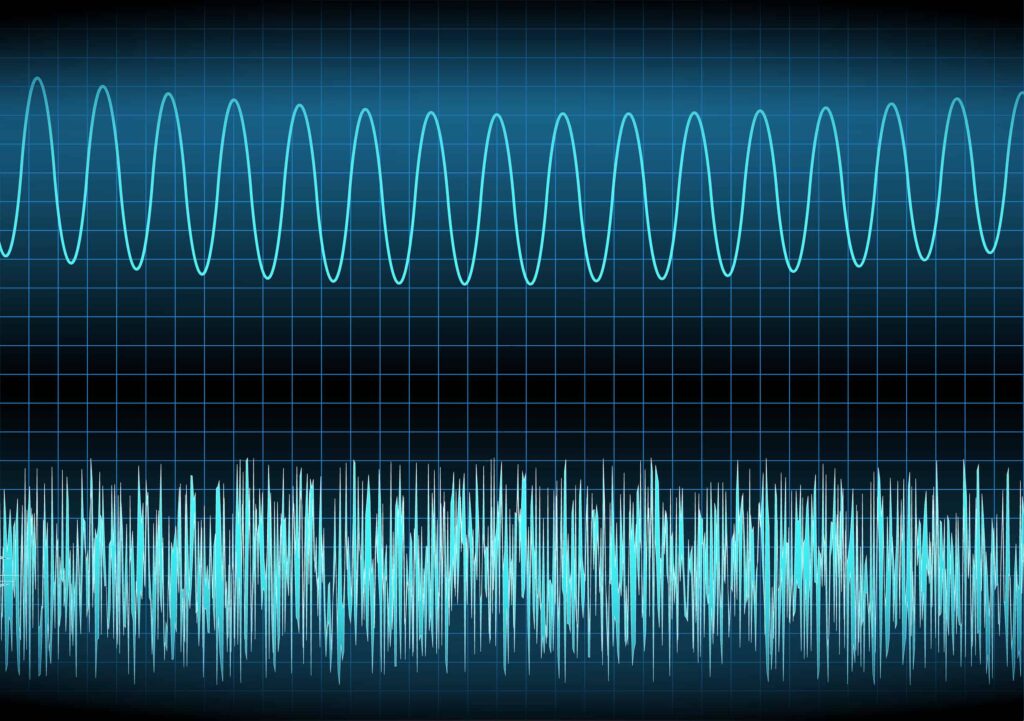
Noise in real-world electronic circuits is an inevitability. Deviations from ideal quantities come as a result of environmental changes, manufacturing imperfections, or pure statistical phenomena. Robust circuit design has to somehow account for these types of noise, so techniques have been developed to model and integrate noise into classical circuit analysis. Generally, the methodology for noise circuit analysis is to find a model equivalent that is possible to use in the circuit schematic, and to then treat it as another component in simulating the noise effects in the circuit.
For noise circuit analyses, it is important to distinguish between the cause of the noise.
COMMON ROOT CAUSES FOR NOISE CIRCUIT ANALYSIS | ||
Type of Noise | Description | Source |
Thermal Noise | Is generated by the thermal agitation of electrons in a conductor and is temperature-dependent. | Resistors, any conductive material |
Shot Noise | Caused by the discrete nature of electric charge and the random arrival of carriers (electrons or holes) across a barrier. It is present in semiconductor devices like diodes and transistors. | Diodes, Bipolar Junction Transistors (BJTs), other semiconductor junctions |
Flicker Noise | Also known as 1/f noise, it has a power spectral density that inversely varies with frequency. It occurs more at lower frequencies and is related to defects and impurities in materials. | Resistors, MOSFETs, and other semiconductor devices |
Burst Noise | Characterized by sudden step-like transitions between two or more levels (popcorn noise), occurring at random intervals. It is related to defects in semiconductors. | Semiconductor devices, particularly those with manufacturing defects |
Avalanche Noise | Occurs when carriers in a semiconductor gain enough energy to ionize atoms, creating electron-hole pairs and leading to a chain reaction. It is present in avalanche breakdown regions. | Avalanche diodes, over-biased PN junctions |
Another type of noise of particular concern for communication system design is phase noise, which refers to the long-term drift and short-term perturbations of an oscillating signal.
Modeling Noise in Circuits
Noise in circuits is not possible to measure empirically. Therefore, the best approach is to employ an EDA software tool that uses statistical models to describe the probability of the ways that noise can happen.
Power Spectral Density
One of the ways that noise is analyzed is with a power spectral density (PSD), which is a way to describe a signal’s power intensity across the frequency domain. It often involves using a Fourier transform on the auto-correlation function of the signal. This is a particularly useful technique, as it allows designers to identify the frequency components where noise is most prominent. Then, engineers can design appropriate filters to target specific frequencies.
Input-Referred Noise
An approach to efficiently analyze the noise in circuits is the concept of input-referred noise. It is a method that expresses the noise performance of a circuit as if it all originated at the input, regardless of the actual source of the noise. Essentially, the equivalent noise that would need to be at the input of an ideal noiseless system to produce the same output noise as the actual real system. Applications of this technique include the following.
INPUT-REFERRED NOISE IN CIRCUIT ANALYSIS | |
Application | Description |
Individual Component Noise Modeling | Each noise source within the circuit is modeled, and their contributions are transformed to their equivalent values at the input. |
Total Noise Calculation | Combines all individual noise contributions to calculate the equivalent input-referred noise, considering the gain or attenuation each source experiences. |
Performance Evaluation | The input-referred noise level is used to evaluate the noise performance of the circuit, with lower input-referred noise indicating better performance. |
System-Level Analysis | Allows for the analysis of noise contributions stage by stage in systems involving multiple stages, aiding in identifying and mitigating significant noise sources. |
Other Types of Noise Circuit Analyses
Below, we’ve summarized additional types of noise circuit analysis techniques.
NOISE CIRCUIT ANALYSIS TECHNIQUES | |
Method | Description |
Time Domain Analysis | Involves analyzing noise directly in the time domain to identify transient noise and its sources, using tools like oscilloscopes and time-domain reflectometry. |
Frequency Domain Analysis | Goes beyond Power Spectral Density to include examining noise figures across frequencies and using filters to analyze noise in specific frequency bands. |
A statistical approach that simulates a circuit’s performance by varying noise sources and parameters randomly to assess the impact of noise under various conditions. | |
Noise Figure Measurement | Direct measurement of a component or system’s noise figure to quantify the added noise relative to an ideal noise-free system, used for amplifiers and receivers. |
Correlation Techniques | Utilizes analysis of the correlation or autocorrelation of noise signals to understand noise characteristics and origins, distinguishing between correlated and uncorrelated noise sources. |
Spectral Subtraction | Estimates and subtracts noise from a signal based on spectral properties, used in signal processing to improve signal quality corrupted by noise. |
Minimizing noise is probably the single most important objective when designing PCBAs for data TX/RX. Failing to mitigate effects; such as crosstalk, that contribute to high levels of EMI and EMC can significantly degrade performance and reliability. The importance of instituting effective noise circuit analysis supports the utilization of circuit design and simulation software specifically designed to target these types of SI/PI issues.
EMA Design Automation is a leading provider of the resources that engineers rely on to accelerate innovation. We provide solutions that include PCB design and analysis packages, custom integration software, engineering expertise, and a comprehensive academy of learning and training materials, which enable you to create more efficiently. For more information on noise circuit analysis and how we can help you or your team innovate faster, contact us.











